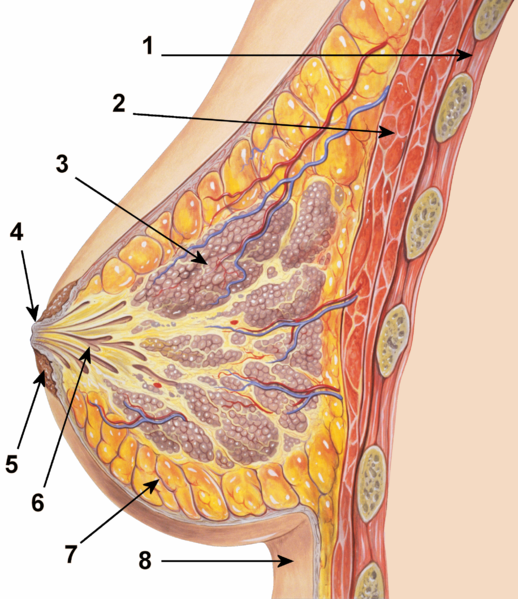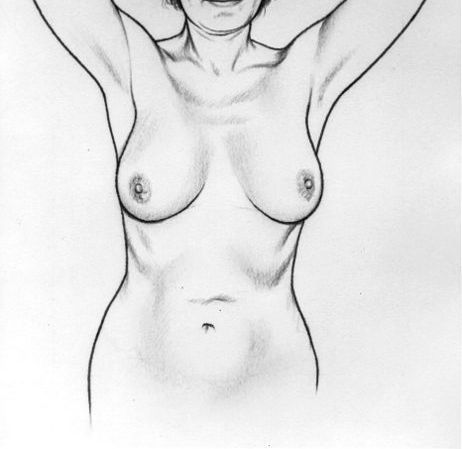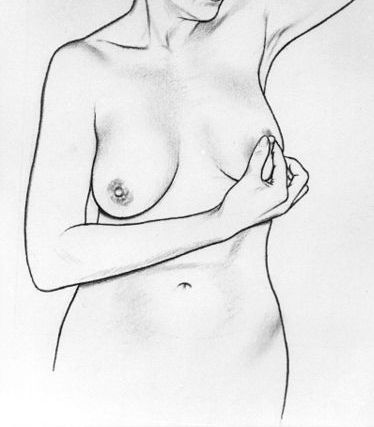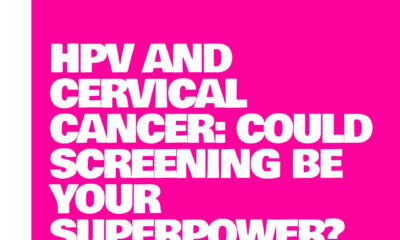Features
BN Doctors’ Lounge: Pink October – Breast Examinations
 October is breast cancer awareness month and for the next four weeks, I’m going to be doing a series of articles on breast health to help raise awareness on the various breast diseases, what they look or feel like, how to identify them early, and how they can be treated.
October is breast cancer awareness month and for the next four weeks, I’m going to be doing a series of articles on breast health to help raise awareness on the various breast diseases, what they look or feel like, how to identify them early, and how they can be treated.
Today, I will lay a foundation by discussing the normal breast structure, and then go on to describe the proper way to conduct a thorough self breast examination. This way you can get familiar with what is normal in general as well as what is normal for you. Once we have this firmly in place, we will look at breast pain, breast lumps, Skin conditions affecting the breasts and nipple discharge in detail over the coming weeks.
So… breasts! Why do women have them? Why can’t men get their eyes off them? What are they made of, and why has the incidence of breast cancer risen sharply in the last 50 years?
I can only answer the last two questions, I’m sorry. The others are way above my pay grade.
BREAST STRUCTURE
The human breast is made up of milk producing tissue (also known as the functional breast tissue) which comprises of the milk glands (small round sacs that produce milk) and the milk ducts (the outlet channels from the glands to the nipple). This functional breast tissue is surrounded by a protective layer of fat, nourished by blood vessels, and supported by fibrous tissue.

1. Chest wall 2. Pectoralis muscles 3. Milk glands 4. Nipple 5. Areola 6. Milk duct 7. Fatty tissue 8. Skin
Adolescence
Breast development begins in the womb and both boys and girls are born with almost identical breast tissue. At puberty the female hormone oestrogen will act on the breast tissue of a girl and initiate the development of the milk glands and milk ducts. Oestrogen also triggers changes in the fat distribution of the body, encouraging the deposition of fat around the breast tissue.
The onset of breast development, its shape, and eventual size, will vary greatly among women as these are under hereditary /genetic control.
Boys may also notice a slight development of breast tissue in the beginning of puberty. This is normal and is as a result of low levels of oestrogen circulating in the body. Once testosterone levels peak however, the effect of the oestrogen is countered and the breasts regress to normal male proportions.
Maturity
At maturity, the adult female breast contains about 15 to 20 lobes, each made up of many smaller lobules. The duct system draining each lobe is a complex network of progressively larger channels emptying into each other until finally about 10 duct tracts pierce through the nipple and provide outlets for milk production. The breast is held up in place by multiple fibrous ligaments that stretch from the anterior chest wall to the nipple areola complex. These are called the Suspensory Ligaments of Astley Cooper after the scientist who discovered them.
The nipple and areola area is supplied by numerous nerve endings and muscle tissues are present in the nipple to allow it become erect in response to stimulation or breastfeeding. Tactile stimulation also triggers the release of a hormone called Oxytocin.
The breast tissue responds to fluctuating levels of oestrogen and as a result will show cyclical variations in shape size and tenderness at different points in a woman’s menstrual cycle. It is important to note that the breasts become significantly bigger, ‘lumpy’ and tender during the monthly cycle. This is normal and is due to the glands and ducts increasing in size. Once the period is over, the breasts should slowly return to their normal size and become less lumpy and less tender.
Pregnancy and Breastfeeding
Though the breast is mature after puberty, the breast tissue remains inactive until pregnancy. During pregnancy, the lobules grow and begin to produce milk. The milk is then released into the ducts so a mother can breastfeed her baby. Muscle tissue around the lobules help squeeze milk into the ducts and this ducts drain out of the nipple.
Menopause
After menopause (when the ovaries stop producing hormones and a woman stops having periods), the number of lobules decreases and those remaining shrink in size.
The loss of breast tissue during menopause means breast density also decreases. Before menopause, the breasts have more breast tissue than fat (higher breast density). After menopause, the breasts have more fat than breast tissue (lower breast density).
BREAST SELF EXAMINATION
In addition to knowing about the general breast structure, it is important to become familiar with the shape and consistency of your own breasts as these are often the first things to change when there is breast disease. The best way to do this is by conducting a regular monthly breast self examination which is best done a few days after you period when the breasts are less tender and less lumpy.
We will follow the Look(x3), Feel, Squeeze, Feel technique†
1. Look (Hands by the side)
Stand before a large mirror that allows you to see both breasts at the same time and put your hands relaxed at your side. Look thoroughly at each breast together and then one after the other. Look out for size, shape and contour. Look at the skin around the breast and notice any changes in colour or texture. Look at the nipples and areole and notice any changes in shape, colour or position.
2. Look (Hands on hips)
Still in front of your mirror, put both hands on your hips and press down firmly and squeeze your chest muscle. This helps to accentuate any deep changes in the breast. Again, look thoroughly at each breast together and then one after the other. Look out for size, shape and contour. Look at the skin and notice any changes in colour or texture. Look at the nipples and areole and notice any changes in shape, colour or position.
3. Look (Both Hands over head)
Still in front of your mirror, raise both hands over your head and as you do so, look at both breasts. Note the size, shape, and drape. Keep your hands above your head. Look up towards your armpits and note if there are any swellings. Lean forward lightly. Look thoroughly at both breasts, do they move in the same way?
4. Feel (One Arm over head)
Stand in front of the mirror with your left arm only slightly raised (wrist in front of your forehead, but not blocking your view). Use the first three fingers of your right hand to apply gentle pressure to the left breast. Move systematically from top to bottom in overlapping straight lines working your way from the cleavage area to the armpit area. Take note of any changes in texture, consistency, or size. Switch sides and repeat, checking the right breast in the same way.
This is best done after a shower whilst the skin is wet or after you apply your moisturiser as there is less friction.

5. Squeeze (Nipples)
Lower your arms and with your thumb and index finger of your right hand, gently squeeze the left nipple from the base out and pull it forward. Does the nipple spring back into place? Look out for any discharge. Switch sides and repeat, checking the right nipple in the same way.
6. Feel (Lying down)
Lie on your bed with a pillow under your head and shoulders. Place your left hand under your head and use the first three fingers of your right hand to feel your breast as you did in step 4. Take note of any changes in texture, consistency, or size. Switch sides and repeat, checking the right breast in the same way.
Examine your breasts at the same time after every period and if you notice anything suspicious, please see a physician.
In a Nutshell
The female breast is made up of functional tissue (glands and ducts), packing tissue (fat) and support tissue (suspensory ligaments). These are supplied by a rich network of arteries veins and nerves.
Early detection and treatment is one of the main modalities of combating breast disease and regular Breast Self Examination can help ensure that early changes are detected in time.
Did you know?
Current research suggests that wearing a bra will actually make you breasts sag faster than not wearing one. The reason for this is that the bra straps and cups take over the function of lifting and supporting your breasts from the suspensory ligaments of Cooper and because these ligaments are not being used they become weak and unable to support the weight of the breast.
Disclaimer: This article is written for patient education. It is not intended to diagnose or prescribe treatment and does not replace the advice of your physician. It in no means attempts to cover the full medical scope of this condition.
† The “Look(x3), Feel, Squeeze, Feel technique” adapted from a review of current literature by Dr. David Olamide Craig (MBBS MSC FRSPH) © 2013. Up to date as of 1st October 2013.
Photo Credit: © National Cancer Institute.1987-2000./ Wikimedia Commons / Public Domain | © Patrick J. Lynch, medical illustrator; C. Carl Jaffe, MD, cardiologist.
____________________________________________________________________________________________
David Olamide Craig is a Physician, Pastor, Photographer, Poet and Playwright. He graduated Bachelor of Medicine and Bachelor of Surgery from the University of Ibadan and holds a Masters in Occupational Health from the Institute of Occupational and Environmental Medicine, University of Birmingham. He is passionate about healthy living and sustainable energy. When he is not seeing patients, Dr. Craig spends his time stretched out on his favourite couch, reading books, magazines, and blogs. Catch him on www.ijgb.com.ng and follow him on Twitter @RevDrCraig


























